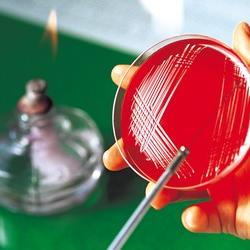Source Institutions
Source Institutions
Add to list Go to activity

In this activity, learners grow germs collected from their hands and other objects. They cultivate the germs on a growth medium (such as slices of grapefruit or processed cheese) for a week. Learners document the growth and compare how different sources produce different amounts of growth. The lesson plan addresses how doctors grow cultures of different germs to study them and to diagnose sick people. It also discusses the history of the discovery of germs, including key historical figures in the development of germ theory. Total learning time for this activity is under an hour, but it's spread across several sessions over at least a week. Learners gather samples in one session, and then examine them at least a week later. [Activity is publicly available through a web crawler capture on Archive.org.]
- 30 to 45 minutes
- 1 to 7 days
- 1 cent - $1 per student
- Ages 6 - 14
- Activity, Experiment/Lab Activity, Lesson/Lesson Plan
- English
Quick Guide
Materials List (per student)
- Growth medium for microbes (agar, gelatin, slices of grapefruit, slices of processed cheese)
- Containers (petri dishes, margarine tubs, or Ziploc bags)
- Labels (stickers, tape, permanent pen)
- Soap
- OPTIONAL: Several kinds of soap
- OPTIONAL: Cotton swabs
- OPTIONAL: Glo-Germ™
- OPTIONAL: Black light (UV-A only)
Subjects
-
Life Sciences
- Cells
-
Diversity of Life
- Viruses and Bacteria
- Protists and Fungi
-
Human Body
- Medicine
- Immune System
-
The Nature of Technology
-
Technology and Society
- Technology and History
-
Technology and Society
Audience
To use this activity, learners need to:
- see
- see color
- read
- touch
Learning styles supported:
- Involves hands-on or lab activities
Other
Includes alignment to state and/or national standards:
Access Rights:
- Free access
By:
Rights:
- All rights reserved, OMSI, 2005
Funding Source:
- National Science Foundation ESI, 0206403
